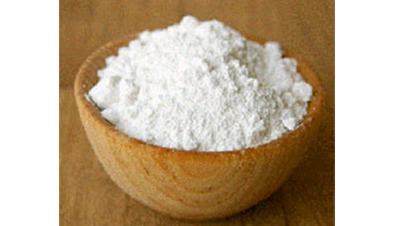
Corn Starch
| Botanical Name : | Foeniculum Vulgare |
| English Name : | Maize Starch |
| Hindi Name : | Makai |
| Family Name : | Poaceae |
About
Diverse uses of starch make it a very versatile product.
Corn Starch or Maize is a typical cereal starch with distinctly low protein and ash contents.
Its carbohydrate content of high purity makes it of use in several industries.
Corn starch should never be consumed raw, though.
Most recipes that use cornstarch call for 1 to 2 tablespoons that are heated either on the stovetop or in the oven.
To thicken a sauce, soup or stew, mix a small amount of cornstarch with cold water to create a slurry.
Physical Analysis
| 1. Appearance | Fine white powder |
| 2. Odour | Odourless |
| 3. Taste | Tasteless |
| 4. Microscopy | Corn starch confirm |
| 5. Starch content on dry basis | 98 % Min |
| 6. Protein content | 0.68 % Max |
Microbial Analysis
| Parameter | Standard (Max) |
| 1. E.Coli & Salmonelia | Absent |
| 2. Total microbial count | 1000 CFU/G |
| 3. There of yeast & moulds | 100 CFU/G |
Chemical Analysis
| Parameter | Standard (Max) |
| 1. Moisture contents % | 13.0 % Max |
| 2. Total ash % | 0.25 % |
| 3. Acid insoluble ash | 0.10 % |
| 4. PH Value | 4.5 Min |
| 5. Sulphur dioxide | 50 Ppm |
| 6. Arsenic | 0.10 Ppm |
| 7. Lead | 0.10 Ppm |
Cornstarch is a common ingredient made from the starchy portion of corn kernels known as the endosperm.
It’s used as a thickening agent for gravies, marinades, sauces, soups, and casseroles.
Though most people think cornstarch is reserved for cooking, it’s quite useful outside the kitchen.
Corn starch, maize starch, or cornflour (British English) is the starch derived from corn (maize) grain. The starch is obtained from the endosperm of the kernel.
Varieties
Food Grade, Industry Grade
Usage
1.) By virtue of its Superior uniformity and stability of water solution.
The use of starch is preferred to any other material for sizing, finishing and printing.
It offers economy alongwith ease in filling the interstices of the weave.
This provides the requisite strength and weight .
2.) A Textile engineer finds it suitable for all types of clothes and yarns as it offers a wide titration of parameters such as viscosity, binding strength and its compatibility with thermoplastic and thermosetting resins for a permanent inish and back filling.
Moreover, starch has an added advantage of being washed away easily from the fabric.
3.) A Pharmacist uses starch as a tablet binder in excepient and as a disintegrating agent in the dispersible tablets and also in the sustained release formulations.
4.) Pharmaceuticals : Dextrains are used as a neutrient source in preparations of certain antibiotics.
5.) For a householder the ubiquitous nature of starch does not go unnoticed due to its presence in food products such as ketch-ups, ice-creams, cakes, biscuits, chocolates, wafers and drycell batteries, detergents, etc.
Starch also finds itself to use in adhesives and gums.
Ladies love the soft and silky feel of starch in talcum powder.
Children enjoy the blasting sound of starch in the crackers.
Starch also finds immense usage in paper industry to enhance bursting & tensile strength, elongation, fold endurance, pick resistance etc.
Starch also improves the printability of paper by inhibiting ink penetration and forming a hard firm surface.
Packing
50 kgs, 25 kgs, 15 kgs
